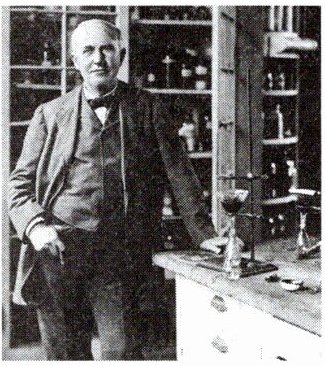四、阅读理解
Thomas Edison's story shows that true talent comes from endless curiosity. Born in Ohio, the USA, his formal education lasted only three months—his teacher couldn't stand his endless questioning. His mother Nancy became his teacher, offering lessons that included reading, writing, and hands-on experiments (实验) in their home laboratory. By age 10, he had read books like School of Natural Philosophy, and often did experiments as the texts taught.

At 12, Edison took a job selling newspapers on the train. During rides, he changed the baggage car (行李车厢) into a mobile laboratory, studying chemistry textbooks and doing experiments. When his experiments started a fire, the angry conductor (售票员) hit his ears and this caused (导致) his lifelong hearing problem. He didn't give up. Instead, he saw this as an advantage (优势)—learning Morse code (莫尔斯电码) quickly in a few weeks and getting a job as a night telegraph operator. Here, he made his first invention at 16: an automatic telegraph repeater (自动电报转发器).
Edison's Menlo Park Laboratory became his real school. He filled shelves with over 10 000 scientific books, asking all workers to study each night. His famous “invention teams” held midnight discussions (讨论) and all the members talked about their ideas like students in a college. For the light bulb (灯泡) project (项目), he created a special learning way: They kept detailed records of each failed filament (灯丝), building a big materials database (数据库).
When developing the storage battery (蓄电池), Edison did more than 50 000 experiments over 10 years. His notebooks show countless records of each experiment. “Learning isn't remembering facts,” he told reporters. “It's training your mind to deal with problems.”
Edison's whole life is ____▲____. When asked about retirement (退休), he'd say, “I'll stop learning when they nail my coffin (棺材) shut.” Today, his 3 500 notebooks are the strongest sign of his lifelong learning—every page filled with questions, sketches, and the words “Try again tomorrow”.
(
D
) 1. How did Edison deal with his hearing problem?
A. He paid no attention to this problem.
B. He felt very angry about it.
C. He tried many ways to improve his hearing.
D. He took it as a chance.
(
B
) 2. What does Edison's light bulb project show about his learning attitude (态度)?
A. He trusted natural talent most.
B. He saw failures as learning steps.
C. He depended on others' help.
D. He only trusted textbooks.
(
C
) 3. Why does the writer talk about Edison's notebook records?
A. To show he could remember well.
B. To show he failed many times.
C. To show his way of dealing with problems.
D. To tell his invention cost a lot.
(
C
) 4. Which can be put in “____▲____”?
A. a fight against life
B. a search for his own value
C. a never-ending learning journey
D. a series of lucky tasks